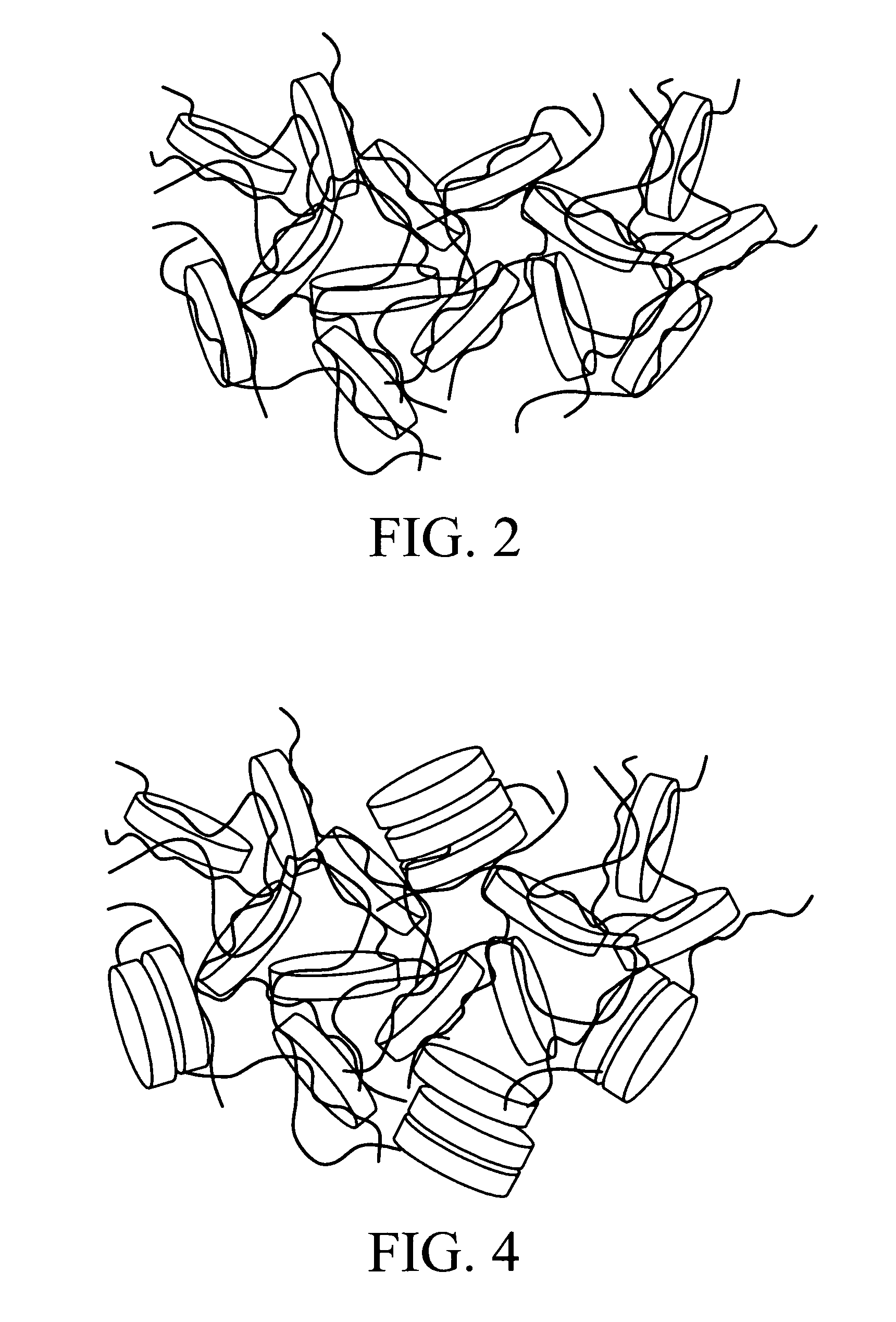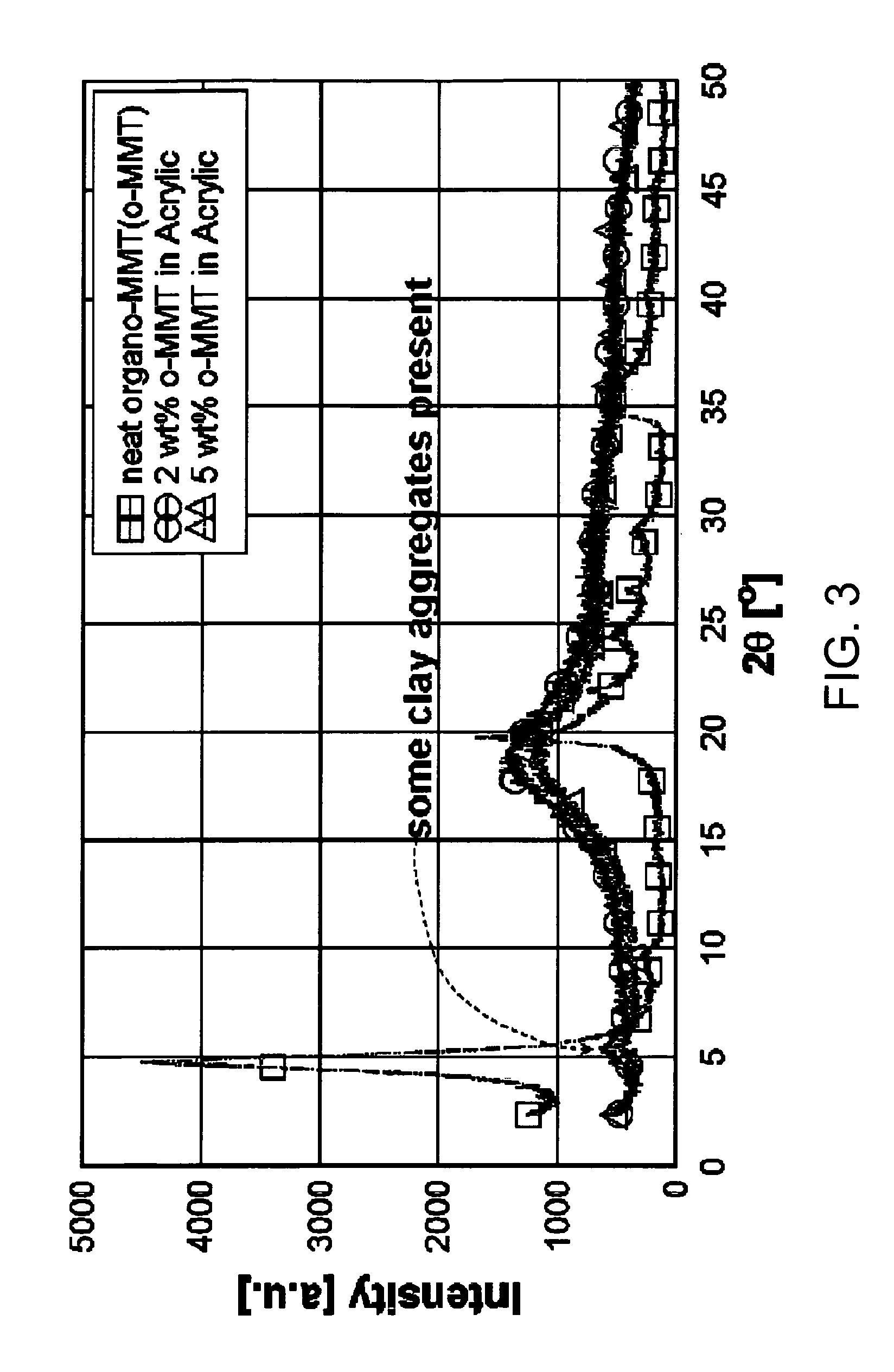Clay-based concrete sealer
a concrete and clay plate technology, applied in the field of sealing systems, can solve the problems of increasing the distance between clay platelets in stacks, reducing and reducing the strength of the reinforcement effect, so as to prevent the loss of moisture from concrete structures, prevent water related damage, and enhance the compatibility of components
- Summary
- Abstract
- Description
- Claims
- Application Information
AI Technical Summary
Benefits of technology
Problems solved by technology
Method used
Image
Examples
working examples
[0050]A number of samples of the sealers disclosed herein were synthesized and tested by the applicants.
example i
[0051]A clay-based concrete sealer composition was prepared in accordance with the formulation presented below. Component percentages by weight of the (undried) formulation are given.
[0052]RayCryl® 1001 acrylic (Specialty Polymers Inc. of Woodburn, Oreg.) . . . 92.2%
[0053]Cloisite® 20A nanoclay (Southern Clay Products of Austin, Tex.) . . . 0.92%
[0054]Di(propylene glycol)butyl ether (Aldrich of St. Louis, Mo.) . . . 3.59%
[0055]Surfynol® 104PG defoamer (Air Products of Allentown, Pa.) . . . 0.67%
[0056]Aqueous NH3 (11.8M—Hill Brothers Chem. of Orange, Calif.) . . . 0.2.62%
[0057]This formulation was utilized as a concrete sealer and provided an effective barrier against water absorption from the outside environment and against water desorption from the concrete. The formulation of Example I was designed to incorporate about 2 percent by weight of clay (Cloisite® 20A) relative to the weight of the solids in the waterborne acrylic emulsion (RayCryl® 1001), which was 45 to 47 percent by w...
example ii
[0060]A clay-based concrete sealer composition was prepared in accordance with the formulation presented below. Component percentages by weight of the (undried) formulation are given.
[0061]RayCryl® 1001 acrylic (Specialty Polymers Inc. of Woodburn, Oreg.) . . . 0.94%
[0062]Cloisite® 30B nanoclay (Southern Clay Products of Austin, Tex.) . . . 0.92%
[0063]Di(propylene glycol)butyl ether (Aldrich of St. Louis, Mo.) . . . 4.08%
[0064]Surfynol® 104PG defoamer (Air Products of Allentown, Pa.) . . . 0.28%
[0065]Aqueous NH3 (11.8M—Hill Brothers Chem. of Orange, Calif.) . . . 0.72%
[0066]This formulation was utilized as a concrete sealer and provided an effective barrier against water absorption from the outside environment and against water desorption from the concrete. By way of further explanation, the formulation of Example II was designed to incorporate around 2 percent by weight clay (Cloisite® 30B) relative to the weight of the solids in the acrylic emulsion (RayCryl® 1001), which was 45 t...
PUM
| Property | Measurement | Unit |
|---|---|---|
| Temperature | aaaaa | aaaaa |
| Fraction | aaaaa | aaaaa |
| Fraction | aaaaa | aaaaa |
Abstract
Description
Claims
Application Information
 Login to View More
Login to View More - R&D
- Intellectual Property
- Life Sciences
- Materials
- Tech Scout
- Unparalleled Data Quality
- Higher Quality Content
- 60% Fewer Hallucinations
Browse by: Latest US Patents, China's latest patents, Technical Efficacy Thesaurus, Application Domain, Technology Topic, Popular Technical Reports.
© 2025 PatSnap. All rights reserved.Legal|Privacy policy|Modern Slavery Act Transparency Statement|Sitemap|About US| Contact US: help@patsnap.com



